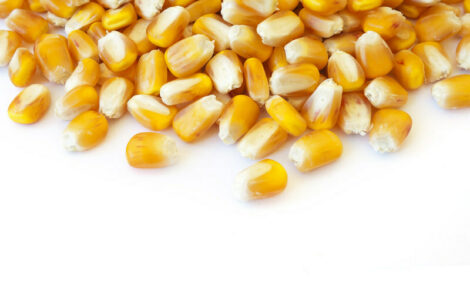



Viet Nam - Growth in Pork Meat Consumption Leads to Opportunities for US Exporters
Vietnamese pig producers need to become more efficient to meet growing domestic demand for pork, and there are opportunities for US companies to export pork and feed ingredients, according to Danielle L. Brewer in the latest GAIN Report from USDA Foreign Agricultural Service.Highlights
With Viet Nam's incredible poverty reduction over the past 10 years and its continuously increasing Gross Domestic Product (GDP), the country's citizens are able to afford more protein in their diets. Many Vietnamese fulfill this dietary requirement with pork supplied by domestic and foreign producers.
With the increased demand for pork, Vietnamese producers need to become more efficient in order to be able to supply local demand, while also being able to compete with foreign imports.
Currently, US export opportunities to Viet Nam for pork to meet local demand and for feed grains and soybean meal to supply the country's growing livestock industry have never been more promising.
Introduction
In 1993, Viet Nam was considered one of the poorest countries in the world, with nearly 60 per cent of Vietnamese citizens falling below the World Bank's international poverty line (US$1 per day). Today, that percentage has dropped to less than 16, making Viet Nam one of the fastest poverty-reducing countries in the world. For over a decade, Viet Nam has enjoyed a sustained average annual GDP growth of seven per cent, with nominal GDP reaching almost $92 billion in 2009.
Viet Nam weathered the global downturn relatively well, and continued GDP growth, albeit at a slower rate, is expected in 2010 and 2011. With this drastic reduction in poverty and sustained GDP growth rate, Vietnamese citizens are able to include more protein in their diet. The growing demand for protein is being supplied by local and foreign suppliers of beef, pork and poultry products.
Industry Overview
Although Viet Nam has what is considered one of the largest pork industries in south-east Asia, it is still unable to fulfill domestic demand for pork products. Industry contacts suggest that swine herds will need to increase to 33.2 million head by 2015 from the current herd size of 27.3 million head in order to fulfill the demand of 90 million Vietnamese citizens, who consume, on average, 23.7kg of pork per year. Vietnamese pork producers will have a tough time fulfilling this demand due to a number of factors, including the lack of available land for pork facilities, low productivity caused by poor herd management and the prevalence of disease in existing facilities.
Officials from Viet Nam's Ministry of Agriculture and Rural Development (MARD) have stated that over the next five years, Viet Nam must increase pork production from the current two million tons to 3.9 million tons to meet increased demand. This will require farmers to significantly improve how they manage and house their herds. Although land restrictions are unlikely to be remedied, many of the issues regarding low productivity and disease could at least be partially, if not entirely, addressed by technical training. Currently, very little extension education is conducted in Viet Nam; what is available is very basic and does not reach farmers in smaller, less affluent provinces.
At present, 85 to 90 per cent of the Vietnamese swine herd is raised in small household/backyard operations; farms are considered commercial if they have 20 sows or more. The Government of Viet Nam (GVN) wants to increase the number of commercial swine operations. In order to implement this, the GVN has reduced or eliminated certain agricultural land rents, and has granted preferential tax rates for commercial farms and large-scale slaughter and processing facilities.
The lack of technical expertise among Viet Nam's pork producers has led to low productivity for sows in small and large herds alike. The main reoccurring problems are malnutrition of sows during gestation and lactation, as well as ineffective, or non-existent, culling practices. While many Vietnamese farms have introduced foreign genetics – from the US, Canada, Thailand, Korea, Spain, France and Belgium – into their herds in order to increase muscling and the overall size of their swine, they fail to increase the feed rations commensurate with heavier animals. Consequently, the mortality rate among piglets is high, and litter size varies widely.
Moreover, there is not an 'expected progeny difference' system in place to assist farmers in managing their culling techniques. Very few data measurements are recorded on sows and progeny. Thus, non-productive sows are allowed to remain in the herd when they could be replaced by more efficient ones. Increasing reproductive efficiency, especially in Viet Nam's case where it is very low, is the easiest way to increase profitability and product output. Increased reproductive maintenance will allow for more uniform litter sizes, lower mortality rates and higher weaning weights. Additionally, less input will be needed in terms of taking care of unhealthy piglets and sows, and better conditioned sows will be able to breed back faster, allowing for less lag time between farrowing.
Another problem that the Vietnamese pork industry faces is the widespread prevalence of disease in pork facilities. Many domestic pork operations do not vaccinate regularly or correctly. It is also difficult to properly store vaccines in Viet Nam, as consistent power sources for refrigeration are not always available. Local pork producers are constantly battling epidemics, the most recent being Blue Ear Disease (also known as porcine reproductive respiratory syndrome, PRRS), and frequently have to kill a large percentage of their herd in order to eradicate harmful diseases that could have been avoided by preventative medicine, and spot treatment of those noticed early. This, again, underscores the lack of technical expertise of many Vietnamese farmers. Education with respect to vaccine usage and care, as well as early detection of disease, will not only allow pork operations to become more profitable but will also help to prevent disease transmission to other livestock or humans, and to maintain food safety.
Opportunities for US Exporters
Currently, extensive technical training is being offered from foreign companies and governments, including the United States. However, this training is only reaching a small percentage of Vietnamese pork producers and most of it is being conducted outside the country. Additional in-country training is required in order for pork operations there to become more productive. With a more lucrative pork industry, there is also increased opportunity for US feed grain and soybean meal exports to Viet Nam. US soybean exports to that country have skyrocketed in recent years, climbing from US$434,000 in 2005 to over $61 million dollars in 2009. Similar increases have been observed in corn exports: while no US corn was exported to Viet Nam in 2005, exports hit a record US$12 million in 2009. These export volumes and values are expected to increase, especially if pork production increases and farmers begin feeding more properly.
While nearly all local pork production (excluding piglet meat) is domestically consumed, the GVN aspires to expand pork exports in the near future. Currently, the Vietnamese pork export market consists of 5,000 to 6,000 metric tons (MT) of piglet meat per year, most of which is shipped to Hong Kong. However, strong and growing domestic demand, combined with food safety restrictions from other countries, make it unlikely this will increase in the short term.
In the meantime, the potential for growing US pork exports to Viet Nam remains high. According to Vietnamese customs data from all countries, Viet Nam imported over 9,000MT of pork in 2009, with a value of over US10 million. However, in the first six months of 2010, imports only totalled around 2,000MT. This decrease can at least be partially attributed to the Blue Ear Disease scare, which caused some Vietnamese consumers to stop buying pork. Wholesale frozen pork imports run 35,000 to 40,000 dong (VND; US$1= VND19,095) per kilo, which is 50 per cent cheaper than domestic prices. These low import prices explain why pork imports have a substantial market in Viet Nam. Previously, domestic food processors made products from domestic pork but now they are using imported meat to reduce production costs.
Further Reading
| - | Find out more information on porcine reproductive respiratory syndrome (PRRS) by clicking here. |
August 2010








